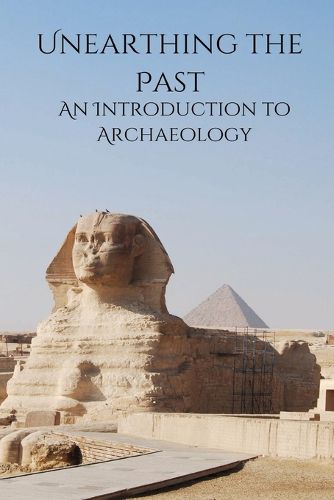Readings Newsletter
Become a Readings Member to make your shopping experience even easier.
Sign in or sign up for free!
You’re not far away from qualifying for FREE standard shipping within Australia
You’ve qualified for FREE standard shipping within Australia
The cart is loading…






This title is printed to order. This book may have been self-published. If so, we cannot guarantee the quality of the content. In the main most books will have gone through the editing process however some may not. We therefore suggest that you be aware of this before ordering this book. If in doubt check either the author or publisher’s details as we are unable to accept any returns unless they are faulty. Please contact us if you have any questions.
History is a powerful reminder of all the amazing things people have done. We
use things that happened in the past, which we call "historical facts," to learn
about the past of any country or group of people. These important events are
the building blocks on which we build our knowledge of the past. Most of what
we know about different cultures and people comes from the records they left
behind, which are called "historical sources."Archaeological sources and written
sources are the two main types of history sources. Let's look into what each
branch means and how much information it has to tell us about our distant
past.First of all, archaeological sources are very important for studying history. There
are writings on stones, metal plates, and other artefacts that show how wise
people were in the past. These writings often tell us a lot about the politics,
society, and culture of the time they were made. Even coins are physical relics
because they show how money was spent and how different societies rose and
fell.Structures that are still standing are an important part of historical sources
because they show how good people were at building things and how they lived.
From grand buildings to simple homes, these ruins give us a glimpse into how
our ancestors lived. By looking at their pots, tools, and guns, we can learn more
about how they used technology and made things.The beautiful statues and
interesting drawings that archaeologists have found show how people lived in
the past. They make people, events, and faith practises last forever, capturing
the spirit of a different time. Not only do these works of art show how creative
people were in the past,
$9.00 standard shipping within Australia
FREE standard shipping within Australia for orders over $100.00
Express & International shipping calculated at checkout
This title is printed to order. This book may have been self-published. If so, we cannot guarantee the quality of the content. In the main most books will have gone through the editing process however some may not. We therefore suggest that you be aware of this before ordering this book. If in doubt check either the author or publisher’s details as we are unable to accept any returns unless they are faulty. Please contact us if you have any questions.
History is a powerful reminder of all the amazing things people have done. We
use things that happened in the past, which we call "historical facts," to learn
about the past of any country or group of people. These important events are
the building blocks on which we build our knowledge of the past. Most of what
we know about different cultures and people comes from the records they left
behind, which are called "historical sources."Archaeological sources and written
sources are the two main types of history sources. Let's look into what each
branch means and how much information it has to tell us about our distant
past.First of all, archaeological sources are very important for studying history. There
are writings on stones, metal plates, and other artefacts that show how wise
people were in the past. These writings often tell us a lot about the politics,
society, and culture of the time they were made. Even coins are physical relics
because they show how money was spent and how different societies rose and
fell.Structures that are still standing are an important part of historical sources
because they show how good people were at building things and how they lived.
From grand buildings to simple homes, these ruins give us a glimpse into how
our ancestors lived. By looking at their pots, tools, and guns, we can learn more
about how they used technology and made things.The beautiful statues and
interesting drawings that archaeologists have found show how people lived in
the past. They make people, events, and faith practises last forever, capturing
the spirit of a different time. Not only do these works of art show how creative
people were in the past,